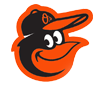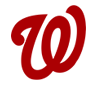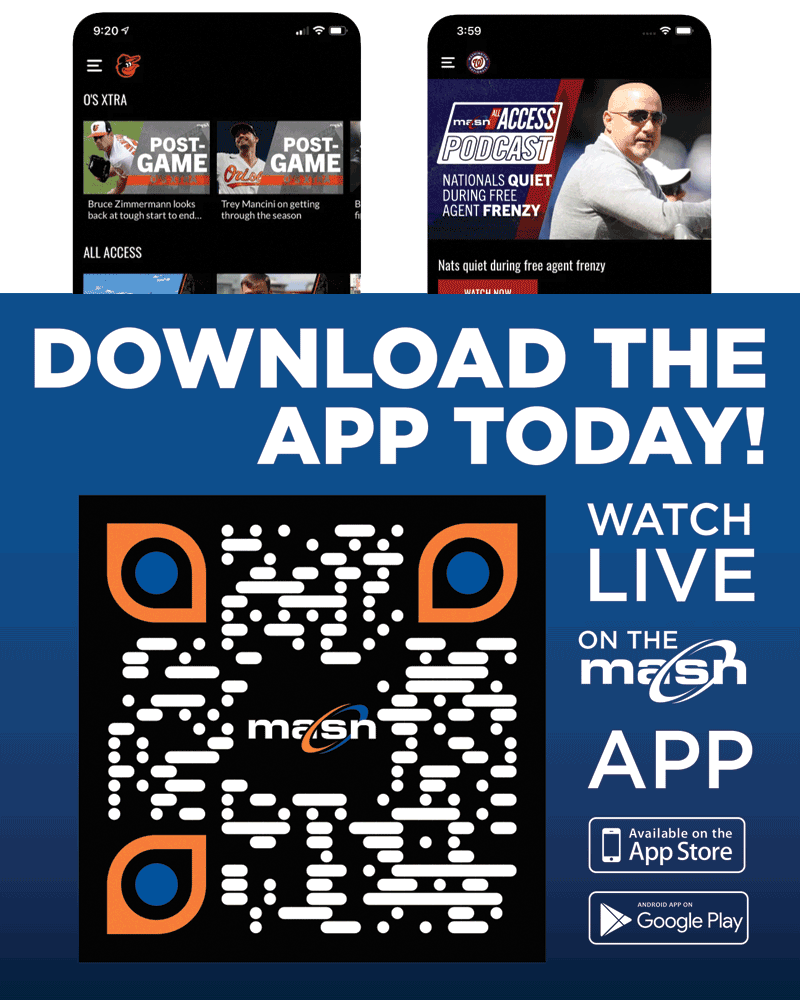During their recently completed road trip to Seattle and Arizona, the Nationals took 240 total plate appearances. Only five of them were taken by a full-time, right-handed batter: Riley Adams, who started one of the six games behind the plate in place of Keibert Ruiz.
Every other plate appearance the entire week was taken by someone who either bats left-handed all the time or switch-hits, a highly unusual situation for any major league club.
But wait, it gets weirder. Though only five of the Nats’ 240 plate appearances were taken by someone who only bats right-handed, a whopping 167 of them were taken by someone who throws right-handed. That’s because six of the team’s current nine regular position players (infielders Nathaniel Lowe, Luis Garcia Jr., CJ Abrams and Jose Tena, plus outfielders James Wood and Daylen Lile) all bat exclusively left-handed despite throwing right-handed.
“I never really put a thought on that,” Tena said, via interpreter Mauricio Ortiz. “But now that you’re saying it … yeah. It feels good to know there are other teammates who also do it.”
Players who bat left/throw right aren’t that unusual in the majors. Of the 540 position players who have appeared in a big league game so far this season, 132 of them bat left/throw right. That’s the second-most-common combination, well behind the 294 players who bat right/throw right. There are 59 switch-hitters (55 who throw right-handed). There are 53 true southpaws who both bat and throw left-handed. And then there are the two real misfits who bat right/throw left: Chas McCormick and Jake Meyers, both from the Astros.
But no team in baseball regularly plays as many bat left/throw right guys as the Nationals, who have five such players who have taken at least 100 plate appearances so far this season (Lowe, Garcia, Abrams, Tena and Wood), with Lile having only made his debut 11 days ago.
It certainly hasn’t hindered their chances for recent success. Despite sending nine left-handed batters to plate almost every night over the last week-plus against opposing right-handed starters, the Nats enjoyed the most productive offensive stretch in club history, scoring at least nine runs in four consecutive games.
“It really feels good,” Tena said. “We’ve seen great results. The team is winning. So we can go with all lefties.”
It would be one thing if the lineup featured a bunch of true left-handers. In the Nationals’ case, though, only center fielder Robert Hassell III both bats and throws lefty. So how did all of their right-handed-throwing players become left-handed-only hitters?
It depends who you ask. Three of the six (Abrams, Wood, Lowe) have no idea how or why it happened.
“I pretty much just picked up the bat that way when I was little,” Abrams said. “I guess I just swung like that forever.”
“I don’t know,” Wood said. “You might have to ask my dad. I think I just picked it up.”
“How did I become a left-handed hitter? I have no idea,” Lowe said. “Like, genuinely no idea. I know my grandfather built golf clubs for me when I was little-little, but he built them left-handed. I hit the ball left-handed all the time, and that was it.”
For the other three, there’s a bit more to the story, each of them involving a family member.
“It’s actually kind of crazy,” Lile said. “I was like 3 years old, and my little brother is a natural lefty. And one day at my grandparents’ apartment, outside they have a tree, and they tied a little Wiffle ball to it with string so he could hit on it. And I saw him hitting lefty. And I was like: ‘Oh, that’s pretty cool. Maybe I should try hitting lefty. Everyone must hit lefty, so I might as well do it, too.’ That’s how I picked it up, from my brother.”
“Growing up, I was a right-handed hitter,” Tena said. “And then my dad saw me one day and he said: ‘Hey, let’s try you hitting lefty.’ So I started hitting lefty, and from then on, I only hit left.”
“My father is righty and righty,” said Garcia, whose father of the same name played eight games for the Tigers in 1999. “So when I was a young guy, I tried to hit from both sides, left and right. And at that time, in the big leagues there were too many lefty pitchers. So my father said: ‘You’ve got to hit lefty, because there’s way more righties you’ll see in a rotation and maybe only one lefty.’ That’s the reason.”
No matter the reason, in each of these six cases, the player began batting left-handed at a very young age. Nobody picked it up later in life. And for the most part, nobody ever tried to switch-hit.
“No, cause they saw my swing, and they were like: Just leave it alone,” Lile said with a laugh.
“I considered it,” Lowe said. “But after about four swings, I considered not doing it.”
An additional weird twist to the story: Just because these guys bat left-handed, they don’t necessarily do anything else left-handed.
“I do everything else right-handed,” Wood said. “I write right-handed. Hitting’s probably the only thing.”
Lowe golfs left-handed. He surfs and skates “goofy style,” which is the equivalent of left-footed. He writes and brushes his teeth right-handed He plays tennis right-handed but plays ping pong left-handed.
Did anyone ever try to tell him this was all off?
“No, never,” he said. “They just kind of let it all happen.”
While an entirely left-handed lineup might sound like a disadvantage for a team because it encourages opposing managers to bring in lefty relievers to face a large group of hitters, the Nationals believe it can actually be advantageous.
With so many players batting from the same side, there’s plenty of sharing of information from those who have already hit to those who are still due up against the same pitcher.
“I think you definitely get an idea of how pitchers are going to approach guys,” Wood said. “I think it helps in that case. It makes the hitters meetings a little shorter, too.”
“It’s pretty cool, because I get to pick their brains about certain things,” Lile said. “So it’s actually nice to be around guys who hit left-handed and have been doing it for a very long time up here.”
This particular lineup arrangement may not last much longer for the Nationals. Their two bat right/throw right regulars are currently on the injured list, but Jacob Young is scheduled to begin a rehab assignment tonight for Double-A Harrisburg and could be back in the majors by week’s end. Dylan Crews also will return this summer after straining an oblique muscle a few weeks ago.
But for now, the Nats will happily stick with their quirky, all-lefty look. An all-lefty look that applies only at the plate, not in the field, from six lineup regulars who are grateful today for the decisions they made (consciously or not) many years ago.
“It was kind of weird at the beginning, but when you’re a kid, you can get adjusted and adapt really quick,” Tena said. “And now look at me: I’m in the big leagues.”




-1745819772711.png)

